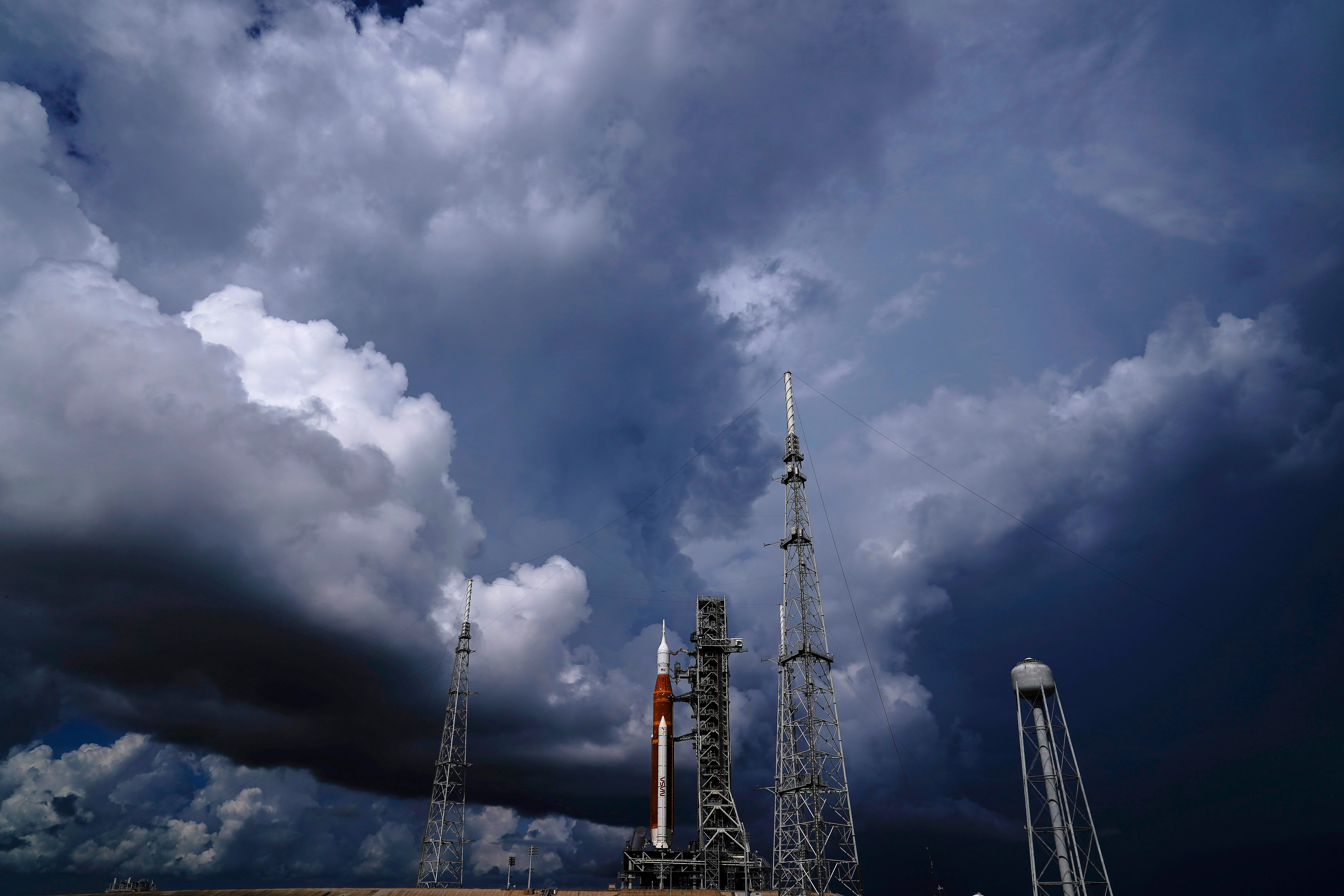Nasa calls off Artemis l launch as Tropical Storm Ian escalates into powerful hurricane headed for Florida
Launch was postponed just hours after Governor Ron DeSantis issued an emergency declaration for 24 Florida counties
Your support helps us to tell the story
From reproductive rights to climate change to Big Tech, The Independent is on the ground when the story is developing. Whether it's investigating the financials of Elon Musk's pro-Trump PAC or producing our latest documentary, 'The A Word', which shines a light on the American women fighting for reproductive rights, we know how important it is to parse out the facts from the messaging.
At such a critical moment in US history, we need reporters on the ground. Your donation allows us to keep sending journalists to speak to both sides of the story.
The Independent is trusted by Americans across the entire political spectrum. And unlike many other quality news outlets, we choose not to lock Americans out of our reporting and analysis with paywalls. We believe quality journalism should be available to everyone, paid for by those who can afford it.
Your support makes all the difference.Nasa has called off the launch of its Artemis l moon rocket and Governor Ron DeSantis has declared a state of emergency across parts of the Sunshine State as Tropical Storm Ian is set to intensify into a powerful hurricane over the coming days.
The space agency’s team announced on Saturday morning that – after holding a planning meeting – they had decided to postpone Tuesday’s launch attempt amid concerns about the upcoming extreme weather.
“NASA is foregoing a launch opportunity Tuesday, Sept. 27, and preparing for rollback, while continuing to watch the weather forecast associated with Tropical Storm Ian,” the agency tweeted on Saturday morning.
The announcement came just hours after officials declared on Friday that the rocket was ready for its hotly-anticipated first test flight – marking the third attempt after two prior setbacks.
Now, team members will continue to monitor the weather to determine if and when to roll the rocket back into the Vehicle Assembly Building at the Kennedy Space Center away from the incoming hurricane.
Officials would have to begin moving the rocket no later than early Monday morning to beat Ian’s charted path towards the US.
The postponement of the highly-anticipated event came just hours after Mr DeSantis issued the emergency declaration for 24 Florida counties and urged residents to prepare for the incoming major weather event.
“The severity and track of Tropical Depression Nine will continue to evolve. Because of this and the potential for dangerous storm surge, heavy rainfall, strong winds, flash flooding, and the potential for isolated tornadic activity Governor DeSantis issued the State of Emergency for the following 24 counties,” his office announced.
“This storm has the potential to strengthen into a major hurricane and we encourage all Floridians to make their preparations.”
The state’s National Guard has been activated to be on standby and Mr DeSantis has called on the federal government to also issue a pre-landfall emergency declaration as the storm encroaches.
Tropical Storm Ian developed over the Central Caribbean Sea this week and is forecast to hit Florida as a Category 3 hurricane by the middle of next week.

The tropical storm is expected to keep strengthening near Jamaica and the Cayman Islands over the weekend.
The National Hurricane Center (NHC) warned that hurricane conditions are possible in the Cayman Islands early on Monday and a hurricane watch is in effect over the islands.
A tropical storm watch is also currently in effect for Jamaica where heavy rainfall, flash flooding and possible mudslides are expected in areas of higher terrain.
Early next week, Ian is then expected to chart its path to the west coast of Cuba – by which point it will have reached near hurricane strength.
It is expected to then slam the west coast of Florida early on Wednesday, bringing with it heavy rains and strong winds.
By then, it could be a Category 3 hurricane with wind speeds of up to 109 miles per hour (175 kilometres per hour).
While forecasters say it is too early to determine the exact path and strength, parts of coastal Georgia now also lie within the hurricane’s cone of uncertainty.
While Ian is still strengthening over the ocean, Hurricane Fiona has now made landfall in along Canada’s Atlantic Coast.
Fiona, which transformed into a powerful post-tropical cyclone late on Friday, struck Nova Scotia early on Saturday, lashing the region with strong rains and winds of up to 92mph (148 km/h).
Homes in its path were pummelled and power lines downed, leaving more than 415,000 residences in Nova Scotia – around 80 per cent of people in the province – without power on Saturday morning, according to the region’s power outage centre.
The hurrrican first ploughed into the Caribbean earlier this week, hammering Puerto Rico, the Dominican Republic and Guadeloupe.
At least eight people were killed and thousands were left without power.



Join our commenting forum
Join thought-provoking conversations, follow other Independent readers and see their replies
5Comments